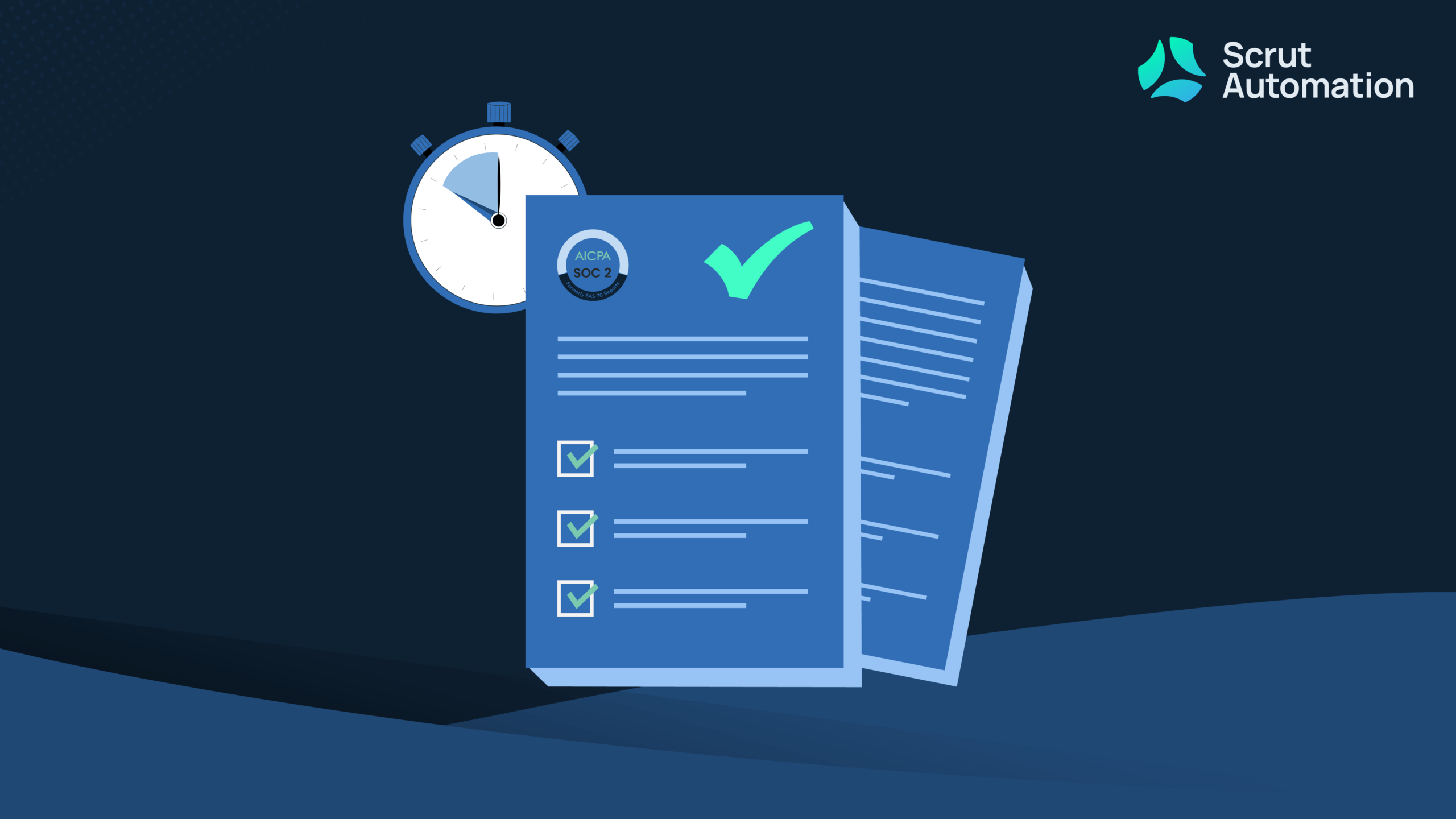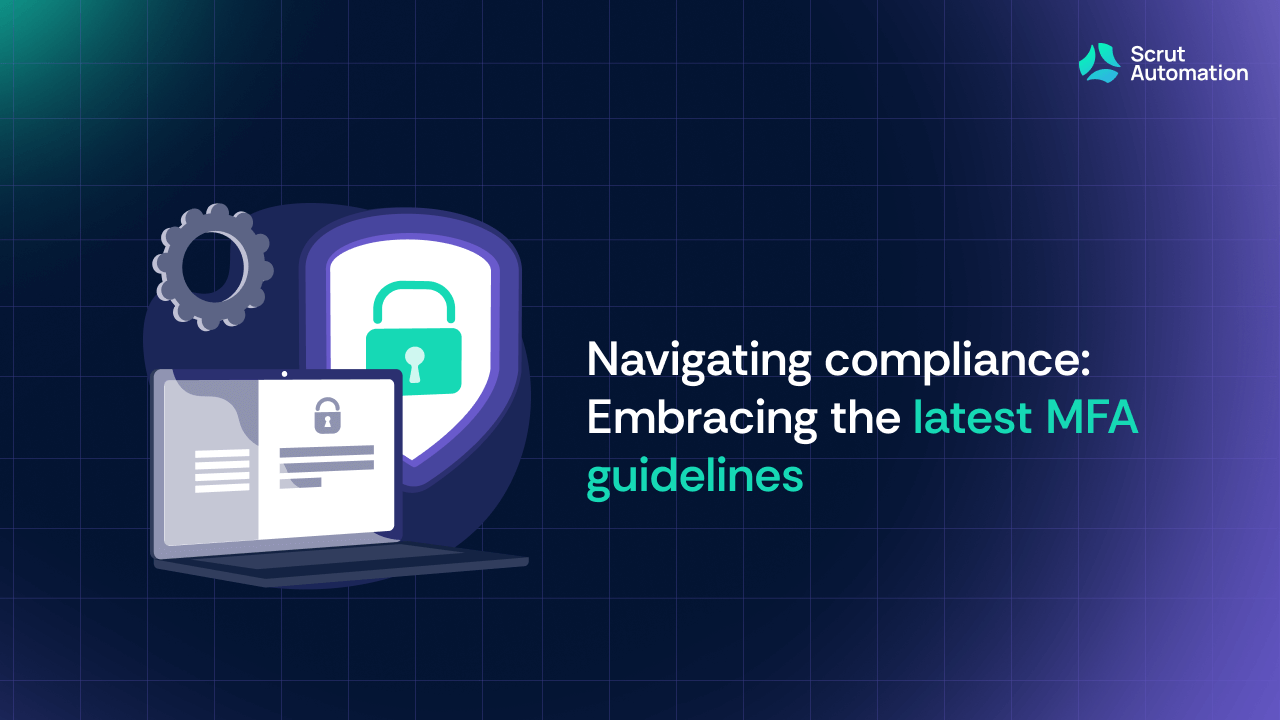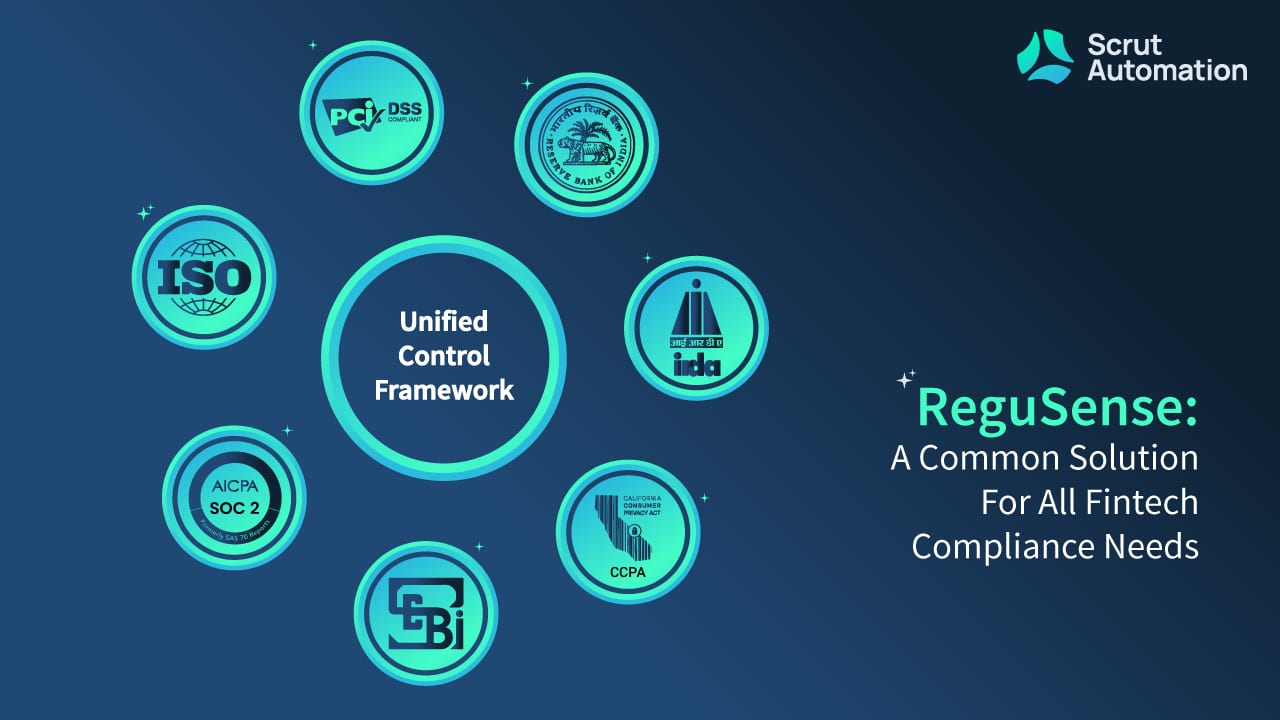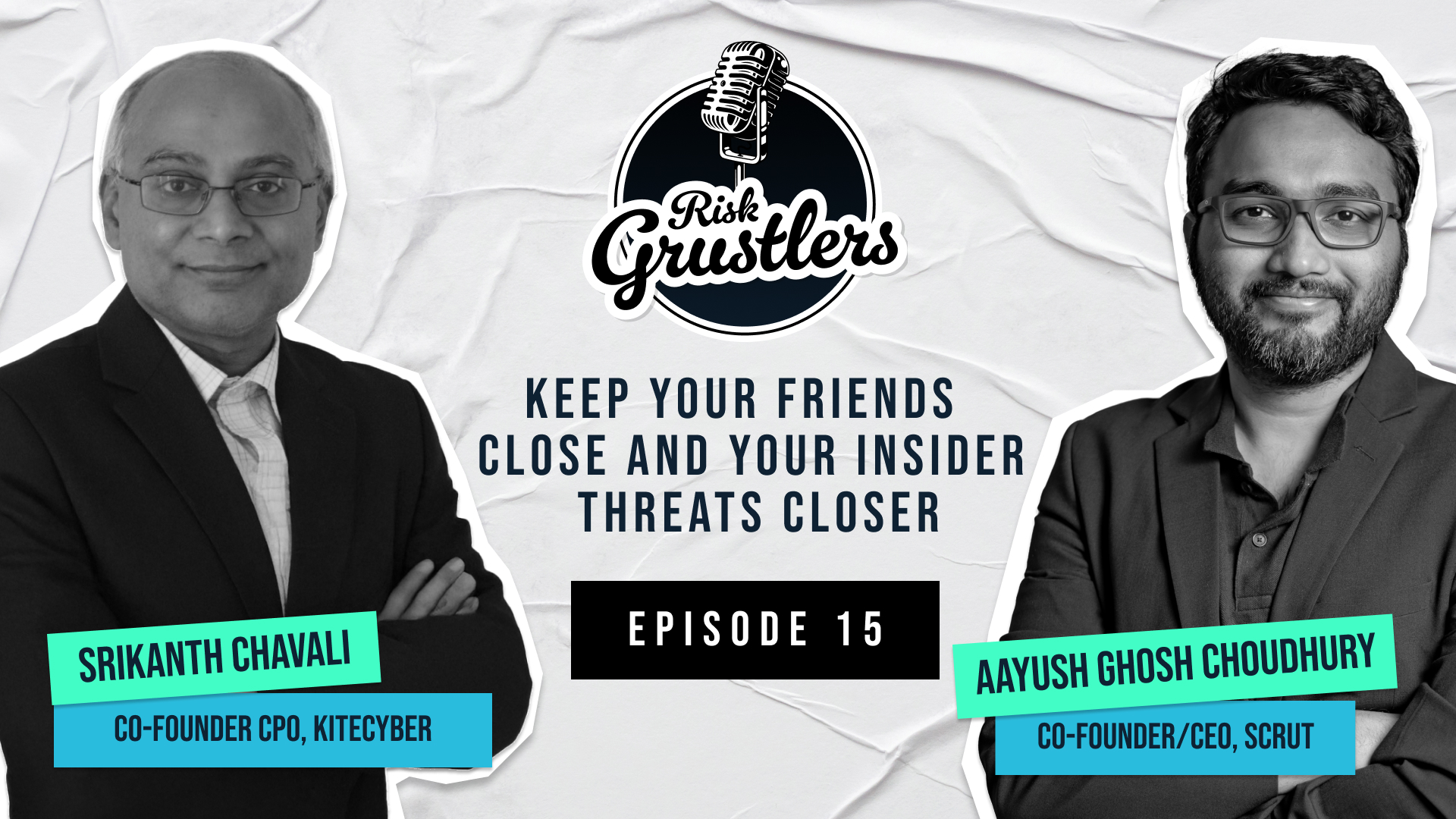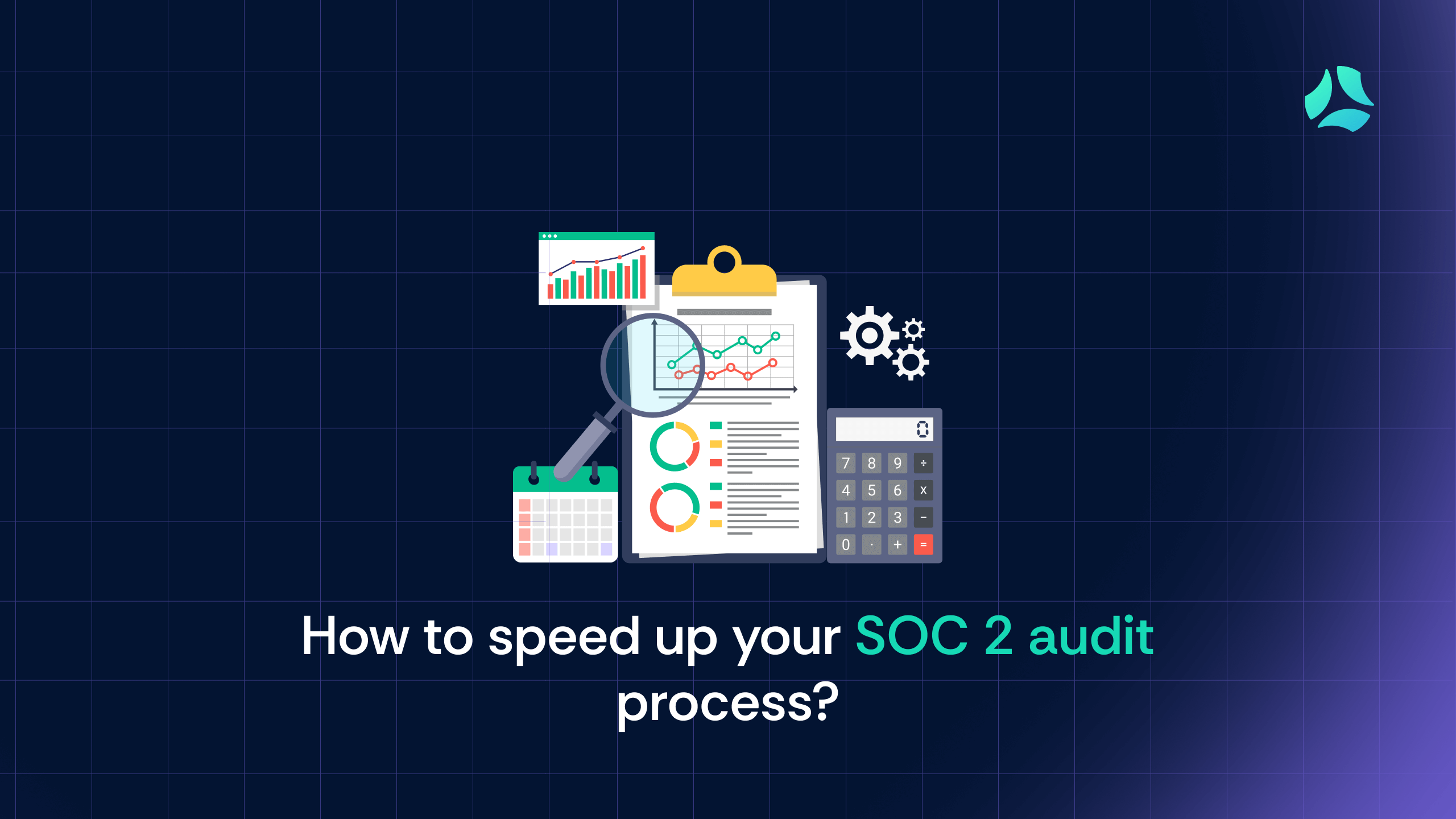If you are a SaaS provider, data security plays a crucial role in building the trust of clients and partners. In today’s day and age, a SOC 2 certification is a gold standard for proving that your company handles clients’ data safely. However, SOC 2 audits can be time-consuming, effort-intensive, and expensive, making them particularly challenging.
Our SOC 2 experts have seen companies get their SOC 2 reports in a couple of weeks and companies that struggle for almost a year to get a SOC 2 report. Our experts have interviewed 100+ companies to understand this disparity and identified a few best practices that can help crunch SOC 2 audit timelines.
The companies that got the SOC 2 report in a short period had one thing in common – They were all following 6 best practices:
1. Enforce multi-factor authentication (MFA)
Multi-Factor Authentication (MFA) is a security technology that uses multiple authentication methods to authorize access. MFA creates a layered defense that makes accessing the target (like a network, database, or computing device) challenging. No employee should share their passwords on message-sharing apps like Slack, Microsoft Teams, iMessage, or Email.
Multi-factor authentication is made much easier with tools like LastPass,
Duo Security, Authy, Ping Identity, and SecureAuth Identity Platform. It should be enforced everywhere it is available, especially on AWS, GitHub, etc.
MFA should also be used for employee-wide tools and non-engineering tools like Gsuite, Human Resource Management System (HRMS), Customer Relationship Managers (CRM), Supplier Relationship Manager (SRM), etc.
MFA makes stealing your organization or your customers’ information harder for a cyber-criminal.
2. Enforce best practices on code hosting platforms
Enforcing best practices on code hosting platforms such as GitHub, GitLab, BigBucket, LaunchPad, and CodePlane will help your organization benefit in multiple ways. One such benefit is being prepared for a SOC 2 audit.
Below are a few steps your software development team needs to follow while using a code hosting platform:
- Enable the protection for your primary and deployment branches.
- Set up a pull request template and place it in the root of your project.
- Review the pull requests and restrict who can push code into the deployment branches.
- Finally, set up continuous integration (CI) to run your tests to pass pull requests that must be merged into production.
Scrut OctopusTM monitors these controls across multiple root accounts continuously to notify the stakeholders about the gaps with relevant fixes – automating compliance and evidence collection.
3. Track & review third parties apps
As your company grows, you will be amazed at how many third-party apps you use daily. Track all the third-party apps, SaaS subscriptions, and browser extensions your company uses. List down what kind of data you are sharing with them. Irrespective of the impact type of vulnerability from the vendors, ask for their security documentation like SOC 2 report.
Using a spreadsheet or a google drive folder to track these apps is time-consuming. We suggest you use an automation tool like Scrut to keep track of such third-party apps from a compliance standpoint.
4. Conduct external PenTest
One of the key requirements of a SOC 2 audit is a pentest report. Conduct an annual Penetration test (PenTest) by an independent third party. PenTest is an authorized simulated attack performed by an ethical hacker on a system to evaluate its security. The Pentesters use the same tools and techniques as attackers to assess the system’s weakness.
Scrut can help you identify the ‘right fit’ Pentesters for your business through its extensive network of Pentesters.
5. Conduct background screening and security training for employees and track policy acceptance
When it comes to providing security of your customers’ data, your employees come the first line of defense against insider threats. And that’s why your employees play a crucial role in your SOC 2 certification process.
Pandemic 2020 has changed how employees work—most of the organization’s staff work from home. WFH has led to more threats adding to existing threats like phishing emails, the web, instant messaging, and network software.
To secure your data, conduct annual security awareness training for your employees to ensure that they are up to date with the current security threats and the ways to avoid them. Collecting and tracking this information can be a hassle if the data is stored in different places.
We recommend using a compliance management platform like Scrut to track the status of employees’ security awareness training.
6. Enforce best practices across your Infrastructure provider
There are a handful of best practices and measures to follow when configuring your infrastructure. Below are a few:
- Enable Google Cloud Logs (GCP)/ CloudTrail (AWS).
- Use Identity and Access Management (IAM) accounts with 2-factor authentication enabled.
- Limit open ports for security groups (AWS) and firewall rules (GCP).
- For cloud storage S3 on AWS: Enable logging, versioning, encryption, and disallow public access to S3.
- For Remote Desktop Services (RDS) or cloudSQL: Enable encryption and automatic daily snapshots and limit access to inside the Virtual Private Cloud (VPC).
Here’s the high-level checklist:
- Enable firewalls.
- Keep IAM lean and mean.
- Make sure your backups have backups.
- Have logged in place – Even in native logging solution.
- Isolate infrastructure through network boundaries
Conclusion
And there you go.
Now, you know the 6 pro tips to streamline your SOC 2 audit. However, staying audit-ready every year requires extensive evidence collection – often in silos, distributed across functions.
Using a compliance automation tool like Scrut helps automate compliance tasks and collect evidence artifacts seamlessly through customized workflows across functions. Scrut automates 85% of evidence collection, ensuring you are audit-ready every day.
Scrut Automation is an innovative and radically simple governance, risk, and compliance automation platform for growing startups and mid-market enterprises. With Scrut, compliance teams can reduce ~70% of their manual effort in continuously maintaining compliance towards SOC 2, ISO 27001, GDPR, PCI DSS, HIPAA, and CCPA. Schedule your demo today to see how it works.
